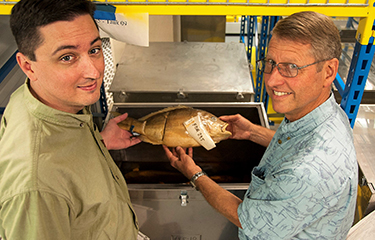US FDA, NOAA release DNA barcode library to identify fish

A team of researchers from NOAA, the U.S. Food and Drug Administration, and other partners have released the first batch of fish DNA barcodes, curated DNA sequences that can be used to identify and authenticate seafood.
Identifying seafood after processing has removed any identifiable features is difficult – fillets of one species can look identical to another. DNA testing offers one solution and can provide concrete identification, but full genetic sequencing can be time-consuming. With DNA barcodes, scientists can sequence a short, standardized section of the DNA and compare it to a library of similar sequences to determine its species quickly and efficiently.
The most important tool for DNA barcoding is a large library of samples, and NOAA, the FDA, the Smithsonian Institution, and the Philippine National Fisheries Research and Development Institute have teamed up to build it. Over the last nine years, the team has gathered approximately 4,000 fish specimens from Philippine markets. The DNA was sequenced to create bar codes, and samples were cataloged at the Smithsonian Institution’s National Museum of Natural History for reference.
Last month, they released the project’s first major publication in Scientific Data, adding 2,525 DNA sequences from 984 Philippine fish species to publicly accessible databases such as GenBank.
“This is the first large publication that provides an overview of the dataset and makes a large amount of data publicly available,” NOAA National Systematics Laboratory Research Zoologist Katherine Bemis said in a statement.
“This initial data release, which only represents about half of the data that’s been collected from the Philippines, has about 2,500 samples,” FDA Seafood Safety Expert Jonathan Deeds added. “The size of our DNA barcode library has just exploded. It’s incredible.”
The data will also be used by U.S. government agencies to verify that seafood is being correctly labeled, with Deeds noting that the DNA barcodes will be incorporated into the FDA’s Hazard Analysis Critical Control Points (HACCP) system.
“The system of HACCP really depends on knowing what product or species you’re working with,” he said. “A huge part of that is having an accurate, comprehensive library of barcodes that we, our regulatory partners, and even the seafood industry can use to identify those species.”
The team is continuing to process Philippine data points, but has also begun collecting samples from other regions.
Photo courtesy of the FDA






Share